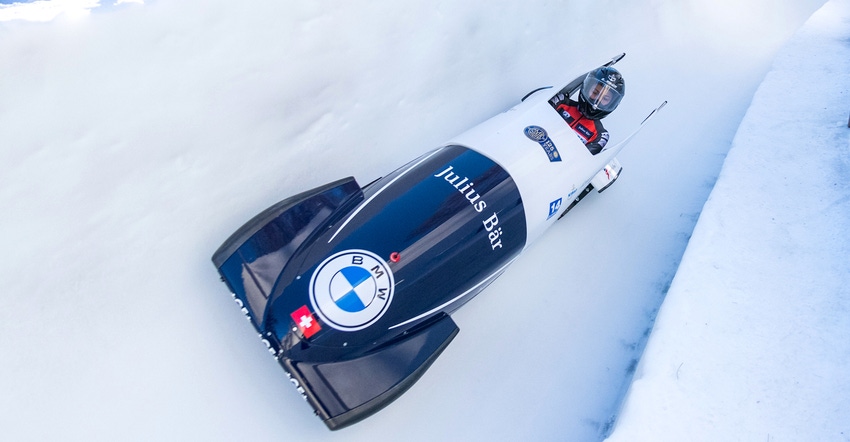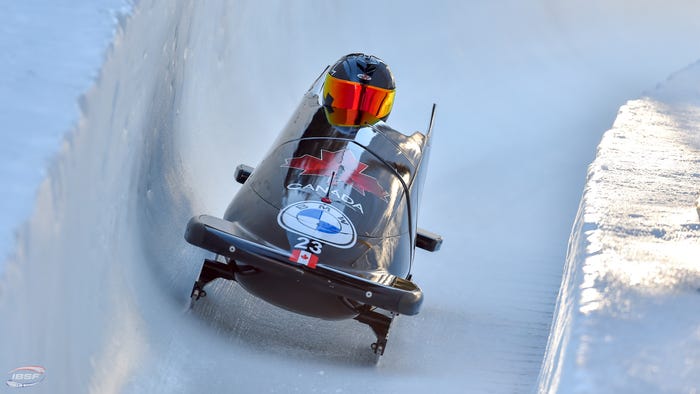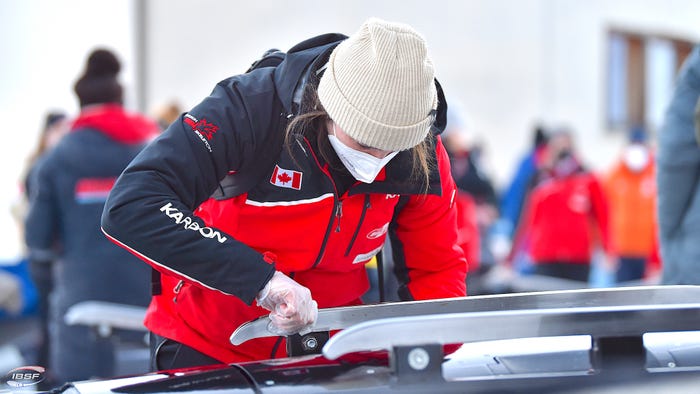Single-person sleds add another bobsled event for women at the 2022 Winter Olympics.

While Olympic sports focus on the athletes performing them, there is almost always some kind of equipment involved. That equipment’s design and condition can affect the athlete’s results, more so in some sports than others.
Bobsled is one of the sports where the design, engineering, and preparation of the equipment is critical, and for this year’s games, there is a new kind of bobsled on the mountain.
It is the monobob, a one-person bobsled in which a single person pushes, drives, and brakes the sled. In traditional two- and four-person bobsleds, those chores are divided up among teammates. Monobob debuted in the 2016 Youth Olympic games and is now part of the World Cup circuit.
For the Olympics, monobob has been added for the women only, evening up the number of events for men and women. Previously, men competed in the two- and four-person events, while women had only the two-person event.
The International Olympic Committee says that it has added the monobob for women rather than the four-person sled because the lower cost of operating monobobs creates opportunities for more countries to field teams in this event.
The difficulty of funding a successful four-person bobsled team is illustrated by the fact that the world-famous Jamaican bobsled team is returning to the Olympics this year after a 24-year hiatus.

“Woman’s four-man bob costs three or four times of monobob,” IOC Sports Director Kit McConnell said, according to NBC Sports. “We felt there would be more universality in the women’s monobob. We really didn’t see more than a handful of countries really developing women’s four-man programs because of the costs involved.”
The monobob weighs 356 lbs. on its own, and the maximum allowable weight with the driver aboard is 539 lbs. for women. In world cup races, where men are allowed, the maximum weight is 572 lbs. It is 110 inches long.
Like all bobsleds, the monobob is built with a steel frame, fiberglass body, mobile front runners, fixed rear runners, push handles, steel brakes, and a D-Ring steering system. The monobob is shorter and lighter than two- and four-person sleds. In a sport where speed comes from weight, that means it is slower than the other sleds. However, in a recent world cup race, television monitors showed U.S. sledder Elana Meyers Taylor reaching 80 mph.
Meyers Taylor will not be competing in the monobob at Beijing because she was outqualified for the single available slot by teammate Kaillie Humphries, though she will be there for the two-person sled race.

One key equalizing factor that makes monobob attractive for new countries to enter teams is that unlike in other bobsled categories, there is a single, specified sled design that is shared by all racers. Remember when NASCAR driver Geoff Bodine hoped to give American sledders a boost by developing his own high-tech Bo-Dyn bobsled for the team? iXent Sports GmbH of Munich builds all the monobobs identically, leaving it up to the racers to prep their sleds’ runners for the races to find more speed.
The process of buffing and sanding drag-inducing scratches out of the runners can take three hours. “We want to make sure we have no scratches in there,” U.S. bobsledder Sylvia Hoffman told NBC Sports. “Scratches mean slower.”
At the start, the monobob driver has 50 meters to push the sled up to speed. The time it takes to make this sprint is critical, with each tenth of a second lost reaching that 50-meter mark corresponding roughly to 0.3 seconds lost by the end of the run.

Once the driver jumps aboard, the reduced weight of monobob and identical equipment puts a premium on their skill piloting the most efficient route down the course and avoiding those brushes with the walls that scrub speed. You can see women’s monobob in its Olympic debut on Feb. 12 and 13.
About the Author(s)
You May Also Like





